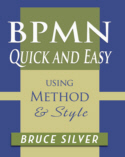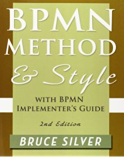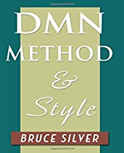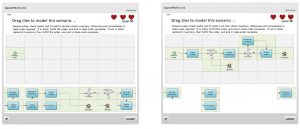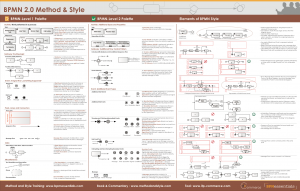Are your process modeling efforts worth all the time and money you’ve put into them?
- They’re not if you’re using a proprietary diagramming notation or simple Visio flowcharts.
- They’re not if you’re using BPMN but your team isn’t sure if they’re following all the rules.
- They’re not if you are using BPMN correctly but the process logic is not clear from the diagram on its own.
All those weeks of SME interviews, management reviews, and process redesign workshops… Have they resulted in diagrams that communicate on their own, without pointing you to reams of attached documentation? If not, you don’t have a valuable asset. You’ve got a mess, and you’re not alone.
Unlock the value of all that work. Turn it into a lasting asset that communicates clearly and can be shared, across the business or between business and IT.
Creating “good BPMN”
… doesn’t require deep technical skill, just a bit of training
You sometimes hear that BPMN is “too hard” for business users or even business analysts. That’s a myth, usually served up by vendors or consultants wedded to their old proprietary tools. It’s just not true. But it’s also true that most of the BPMN you see is NOT “good BPMN,” even if it follows all the rules written in the standard.
To communicate effectively with BPMN, you need to go beyond the rules of the spec. You need to apply additional conventions, following the approach of Bruce Silver’s popular book BPMN Method and Style.
The BPMessentials BPMN Method and Style training, developed and delivered by Bruce Silver himself, teaches you more than the list of BPMN shapes and symbols:
A Delivery Format Tailored to Your Needs
The training is delivered by Bruce Silver in your choice of three formats: live-onsite, live-online, and web/on-demand. The course content, exercises, and post-class certification are the same, regardless of delivery channel. For all channels, the price of the training includes 60-day use of the BPMN tool and post-class certification.
- You’ll learn which model elements you need to know, and which shapes and symbols you can ignore forever. We start with the Level 1 palette, a basic working set mostly familiar from traditional flowcharting. From there we move to Level 2, useful for describing event-triggered behavior. You can actually describe almost any process behavior using only half of the BPMN element set, which greatly lowers the learning curve.
- You’ll learn the real meaning of BPMN’s most fundamental concepts, like activity and process… and how to avoid the diagram structure errors that plague even so-called BPM experts.
- You’ll learn the Method, a cookbook recipe for going from a blank page to a complete and correctly structured process model consistently, time after time.
- You’ll learn the Elements of BPMN Style, basic rules of composition and usage that ensure that the meaning of the model is clear from the printed diagram alone.
- You’ll perform exercises in class using a BPMN tool, because you can’t learn process modeling from a lecture alone.
- And you can achieve certification of your mastery of BPMN Method and Style based on a mail-in exercise individually reviewed by Bruce Silver and iterated until it is perfect. Students have 60 days to complete the certification requirements. This is when you really learn how to create “good BPMN.”
- Post-class certification is included in the training. It doesn’t cost any extra, but students need to work for it.
- First, they need to pass an online exam with an 80% score. That’s the easy part.
- Then they need to create a BPMN model and email it for Bruce Silver’s personal review. The model can describe any process, but it must contain certain required elements, such as gateway end state test, parallel join, event gateway, and error throw-catch. And it must follow the Method and Style guidelines.
- Students need to prevalidate in the tool before submitting, so we get the simple syntax and style errors all fixed beforehand.
- It still usually takes two or three tries to pass. It sounds like a bit of effort, but this is where the student really learns the material. When they earn the certificate students feel they’ve really earned it.
- Increasingly managers are insisting their employees get certified to justify the training investment. And firms competing on BPM services contracts are finding that having the BPMN Method and Style certification on their resume helps win business!
- Check out the list of certified students on the BPMessentials website.
There are many sources of BPM training these days, but BPMessentials training stands out
- Each course is developed and delivered by a recognized expert in the field. Why take a course from someone who read a book when you can take it from the person that wrotethe book?
- The courses are complementary to each other and reflect a common point of view.
- Courses use software tools, and students use them to perform exercises in class. (Note to competition: whiteboard markers are not software tools.)
- Each course includes post-class certification of proficiency.
- Students learn practical skills so they can do it on their own. The class is not a teaser for a consulting engagement.
There’s No Time to Lose
There's no time to loose!
BPMN is the foundation skill you need for anything you do in BPM. It looks like a flowchart, so you think you already know it. But remember, the purpose is to communicate the process logic to others, not to yourself. For that you need a bit of guidance, a methodology and simple rules based on proven principles. You need Method and Style. Eventually you will want to get your whole team on the same page, and you can do that, all at once or one at a time. The same content, exercises, and certification are offered in your choice of delivery format – onsite, live-online, web/on-demand. Certification based on one-on-one review and feedback from Bruce Silver is included in the deal, and you can add on a post-class workshop or mentoring as well. Unlock the value in those wasting assets!
